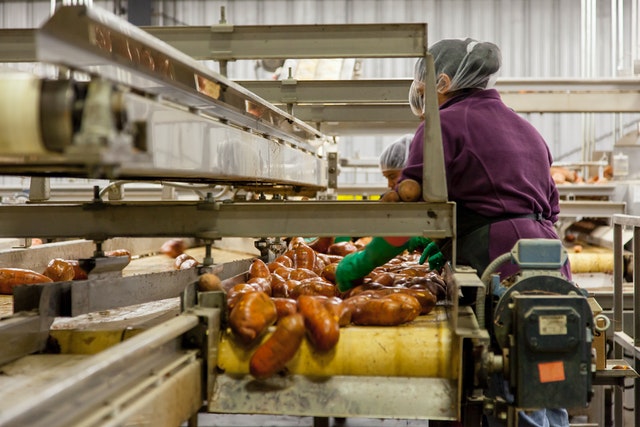Asia Pacific’s e-commerce sales are expected to nearly double by 2025 to reach US$2 trillion ($2.79 trillion), according to market research company Euromonitor International. To capture a piece of that pie, retailers must successfully tackle pre-existing supply chain issues exacerbated by global events, including the Covid-19 pandemic.
“Many large retailers have deployed technologies like self-service scanning devices, mobile computers and mobile point-of-sale solutions at their storefronts in the past years. This enables them to adjust their operating models rapidly as the pandemic accelerated e-commerce and ‘frictionless’ shopping demands to a whole new level,” says George Pepes, Asia Pacific (APAC) Vertical Solutions lead for healthcare and retail at American mobile computing company Zebra Technologies.
However, he claims that those in-store investments alone have limited impact as fundamental operational issues, such as inefficiencies in inventory and fulfilment, persist. Pepes adds: “Many retailers are still using legacy technology systems or manual processes to guide inventory, fulfilment, and logistics actions that do not mesh with modern retail models.
Digitising the warehouse
A recent Zebra survey — documented in the Annual Global Shopper Study, which was released last year — showed that technologies like real-time inventory visibility (82%) and workforce scheduling software (76%) have been helping retail associates create a better customer experience.
This is exemplified in the case of Australian online cosmetics retailer Adore Beauty, which had an official stock list of more than 250 global beauty brands and over 13,000 products. In the last five years, its business grew quickly, such that it was dispatching approximately 6,500 orders daily. It, therefore, decided to move away from its paper-based warehouse processes to keep up with its continued growth.
Pepes says Adore Beauty invested in Zebra’s TC8000 Android Touch mobile computers to modernise its warehouse operations. As such, the e-commerce company saw a 30% increase in productivity across warehouse operations, a 50% reduction in the cost to fulfil customer orders, and improved their outbound order accuracy rate to 99.9%.
APAC retailers, adds Pepes, should also consider leveraging Internet of Things and radio frequency identification (RFID) solutions to enhance their supply chain resilience. “Those who can achieve enterprise-wide connectivity, conduct real-time analytics, and automate mundane tasks and critical decision-making will find it easier to execute operations when demand, labour or production levels are unsteady. They will also be able to track and optimise every process, asset and resource with end-to-end accuracy, improving decisions and outcomes,” he notes.
However, he says that there is no one-size-fits-all digital transformation strategy. “[Retailers need to deploy] solutions that are customised to their goals and unique technological challenges. [They can do so by working] with the right solution partners to determine which technologies can deliver a competitive edge and enable them to take advantage of future growth opportunities. Within the business, strong and active leadership is also required to guide each business through the digital transformation process.”
Last-mile delivery woes
Last-mile delivery is another area that retailers tend to overlook in their digital transformation plan. “The last mile is the most inefficient and costly part of the supply chain. And while retailers, e-commerce companies and logistics providers have embarked on their digital transformation journey, the challenges are more infrastructural,” says Xander van der Heijden, CEO of UNL, a provider of smart micro-location platform and next-gen mapping technology.
He explains that addressing formats in Asia Pacific are complex and non-standardised. There is also a lack of precision in mapping — for example, addresses in Indonesia and India are often landmark-based and descriptive like “the house across the big tree”.
To make matters worse, van der Heijden says that most traditional mapping providers struggle to achieve more than 70% geocoding accuracy. “Inaccurate and unreliable addressing and geocoding are the biggest challenges for last-mile delivery. Without accurate addresses and geocodes, routing engines and optimisation algorithms become useless. Even a single wrong address can have significant implications on delivery planning, delivery times, costs and customer satisfaction.”
Van der Heijden also notes that an effective last-mile delivery strategy requires rethinking the delivery model beyond routing optimisation. APAC retailers will need solutions that can provide full control over the last mile as well as the flexibility to adapt to industry and market shifts.
Micro-location as a solution
Here is where smart micro-location can help: “In the context of UNL, a smart micro-location platform is a fully integrated ecosystem of enterprise-grade, plug-and-play mapping and data tools to build scalable hyperlocal solutions with location intelligence at various scales,” says van der Heijden.
He continues: “So we’ve [digitised] the world into a smart 3D grid, enabling us to digitise physical locations and interface with them via their unique digital identity. [As such, our smart micro-location platform can] create semantic and spatial relationships between landmarks and points of interest, allowing us to accurately parse 90% of failed addresses. It can bring the figure up to 100% through easy-to-use smartphone apps and tools that users use to complete the geocoding process, and by collecting location intelligence such as where to park the car and the fastest way to get to the front door.”
Since each APAC market has unique challenges regarding infrastructure, addressing systems and local standards, the UNL platform is also designed to be data agnostic.
“[Our platform offers] companies plug-and-play tools to create their virtual private maps and securely bring their data and business knowledge. This brings a layer of flexibility, local context and accuracy to location-based solutions like last-mile delivery,” says van der Heijden.
The platform, he adds, is developed with security in mind and follows industry standards for data authorisation and privacy. UNL will continuously harden the platform’s security, such as using blockchain to ensure and protect user identity and data ownership. “Data autonomy and ownership have been core to our company philosophy and values since day one. Any data our clients bring remains under their control and ownership, and they can manage data access rights.”
Powering the future of retail
As supply chain disruptions continue, volatility and uncertainty are here to stay for the foreseeable future. APAC retailers must therefore reimagine their supply chains and empower their employees with the right technologies to address ever-changing business and customer demands.
“Retailers will be [increasingly] expected to provide a seamless customer experience between online and brick-and-mortar. Technology [can help by] fuelling productivity, shopper satisfaction and service, shaping the retail experience,” says Pepes.
Apart from digitising the warehouse and supply chain processes, he advises retailers to consider using prescriptive analytics. By doing so, they will be able to “intelligently analyse what is happening across the supply chain in real-time, interpret why it is happening and delegate a [particular] task to a specific worker to resolve the issue right then and there”.
Meanwhile, van der Heijden believes that hyper-localisation will be vital to a retailer’s success in the future. “The future of commerce is hyperlocal, hyper-contextual and hyper-connected. Hyper-local deliveries promoting micro-local commerce will become the norm and carve the path towards greener, more sustainable supply chains and higher customer satisfaction.”
He concludes: “Taking it a step further, local inventories will become shared inventories in the future, allowing companies to collaborate and cross-capitalise on their resources and enabling new delivery, data and business models.”
























